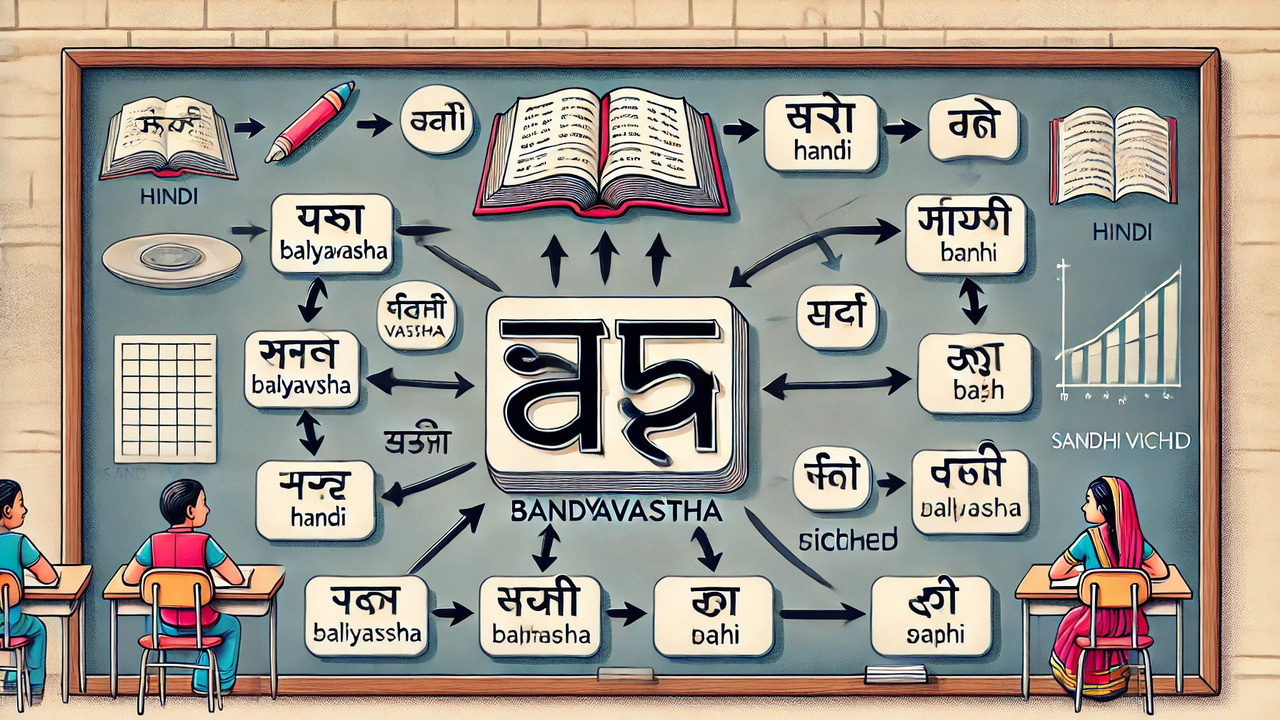Introduction
“Balyavastha ka Sandhi Vichchhed” is a crucial concept in studying Sanskrit grammar. This term is particularly significant for those delving into the intricacies of the Sanskrit language, especially students and scholars who aim to understand the nuanced mechanics of word formation and grammar. This article will explore the meaning, importance, and practical application of “Balyavastha ka Sandhi Vichchhed,” along with some frequently asked questions related to the topic.
What is “Balyavastha”?
“Balyavastha” refers to the state of being in childhood. In a broader linguistic context, it can be understood as a term denoting the initial stages of the early formation phase of words. This phase is critical in Sanskrit grammar, where understanding the basic building blocks of words is essential for grasping more complex grammatical structures.
Understanding “Sandhi Vichchhed”
“Sandhi” is a Sanskrit term that means ‘joining’ or ‘combination,’ and “Vichchhed” means ‘separation’ or ‘disjunction.’ Together, “Sandhi Vichchhed” refers to the process of breaking down compound words or combined forms into their constituent parts. This process is essential for understanding the root forms and the grammatical rules that apply to word formation in Sanskrit.
Importance of “Balyavastha ka Sandhi Vichchhed”
The concept of “Balyavastha ka Sandhi Vichchhed” is vital for several reasons:
- Clarity in Understanding: By breaking down words into their basic components, learners can better understand their meanings and grammatical functions.
- Foundation for Advanced Studies: Mastering the basics of word formation through “Balyavastha ka Sandhi Vichchhed” lays a strong foundation for more advanced studies in Sanskrit grammar and linguistics.
- Error Reduction: Understanding how words are formed and separated helps reduce common errors in writing and pronunciation, leading to more accurate language use.
Practical Application of “Balyavastha ka Sandhi Vichchhed”
To illustrate the practical application of “Balyavastha ka Sandhi Vichchhed,” let’s consider an example. The compound word “बालकः” (Bālakaḥ), meaning ‘boy,’ can be broken down into its root components through the process of Sandhi Vichchhed.
- Identifying the Root Words: The word “बालकः” can be separated into “बाल” (Bāla) and “कः” (Kaḥ).
- Understanding the Meaning: “बाल” means ‘child’ or ‘young,’ and “कः” is a suffix used in various contexts. By understanding these parts, the overall meaning of the word becomes clearer.
- Applying Grammatical Rules: The separation also helps us understand how grammatical rules apply to word formation, such as the rules of Sandhi (joining), and how they alter word forms in different contexts.
Conclusion
Understanding “Balyavastha ka Sandhi Vichchhed” is essential to mastering Sanskrit grammar. By breaking down words into their basic components, learners can gain a deeper insight into the language’s structure and usage. This process enhances clarity, reduces errors, and builds a solid foundation for advanced linguistic studies. Whether you are a student, a scholar, or simply a language enthusiast, delving into the intricacies of “Balyavastha ka Sandhi Vichchhed” will undoubtedly enrich your understanding of Sanskrit.
FAQs on “Balyavastha ka Sandhi Vichchhed”
1. What is the significance of studying “Balyavastha ka Sandhi Vichchhed” in Sanskrit?
Studying “Balyavastha ka Sandhi Vichchhed” is significant because it helps one understand the fundamental structure of Sanskrit words, which is crucial for both basic and advanced language learning.
2. How does “Balyavastha ka Sandhi Vichchhed” help you learn Sanskrit grammar?
“Balyavastha ka Sandhi Vichchhed” aids in learning Sanskrit grammar by providing a method to deconstruct complex words into simpler components, making it easier to understand and apply grammatical rules.
3. Can “Balyavastha ka Sandhi Vichchhed” be applied to modern Indian languages?
While “Balyavastha ka Sandhi Vichchhed” is specific to Sanskrit, breaking compound words into their basic forms can be applied to some extent to understand the grammar of other Indian languages influenced by Sanskrit.
4. Are there any tools or resources to practice “Balyavastha ka Sandhi Vichchhed”?
Several resources are available, including textbooks on Sanskrit grammar, online courses, and software tools that offer practice exercises for “Balyavastha ka Sandhi Vichchhed.”
